Peter MALONE
MSC NEWS WE MISSED
MSC NEWS WE MISSED
Missionaries of Sacred Heart bid farewell to St Albans

Many MSC from Australia have visited, a number have stayed at, our parish in London, St Albans.
It is only recently that we discovered the news about St Albans – not as alert to Social Media as we thought.
Here is Carl Tranter’s statement:
On Pentecost Sunday, Fr Carl Tranter MSC, Provincial of the Missionaries of the Sacred Heart, visited St Alban and St Stephen to announce the sad news that the Order would be withdrawing from the parish, following the retirement or death of a number of the MSC community in recent years. The following is an abridged version of his message.
With deep regret we have decided to hand the parish back to the pastoral care of the Diocese of Westminster later this year. Like many Religious Congregations in Europe, we are currently experiencing a period of rapid decline and diminishment in the Irish Province of the MSC. Sadly, the reality is that we simply do not have the personnel to provide continued ministry here in St Albans.
We began our service in St Albans 120 years ago, in 1899, at the initiative of our Founder, Fr Jules Chevalier, and it is our longest serving place of mission in England and Ireland. It has been a graced place to live and minister for successive generations of Missionaries of the Sacred Heart. It has been and is a wonderfully alive, passionate and committed parish and it has been a privilege to be part of the joys, struggle, growth and development of the Catholic community here for the last 120 years, a time which has seen enormous changes in our country and Church as well as in this city and the parish. Together as MSCs and parishioners many generations have lived and celebrated their faith here through the best of times and the worst of times, including two world wars, and despite challenges and failures along the way, I know we have all sought to be authentic and credible witnesses to Christ and his Church here in St Albans.

Carl Tranter and friend
On this day of Pentecost especially, however, we are reminded that the Church is Christ’s, assured and animated by his Spirit. It is not the possession of any one of us. The parish of St Albans does not belong to the MSCs; we are simply missionaries, those who like the disciples have been sent by the Lord to serve. For us as MSCs our special missionary mandate is to give witness to a God who loves us with a human heart in the person of Jesus Christ. We have had the joy, honour and privilege of serving that mission here for 120 years. Now it is time for others to be sent and to continue that service.
I know there will be many among you who are saddened by this decision, as also there will be many MSCs. There will be ample occasion over the coming months to give thanks to God and to one another for the experience and memories of our shared Christian pilgrimage together over the last 120 years.
Thank you for the many ways in which you have welcomed, supported and worked with successive MSCs over the years, and thank you for continuing to work in close partnership with Frs TJ, Jimmy and Alan over the coming months as we prepare for September’s handover. May the Holy Spirit, who empowers us all to live fully and boldly our faith, continue to abide in and inspire the local Church here in St Albans now and in the years to come.
With effect from September, Fr Michael O’Boy has been appointed Parish Priest and Fr Julian Davies (to be ordained on 27th July) Assistant Priest.
For those who would like to know more about the MSC presence at St Albans.
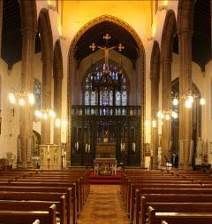
The formation of the parish really began in 1876 when a small church was built in London Road and dedicated to Ss Alban & Stephen in 1878. In 1899, the Missionaries of the Sacred Heart (MSCs) were invited to take charge of the mission of St Albans. By 1900, it was decided a larger, more ornate church was required, so in 1903, the current church was built in Beaconsfield Road. The church was dedicated and blessed on New Year’s Day 1905. In 1959, a Mass centre started at Skyswood Primary School and later transferred to St John Fisher’s School.
In the mid-1960s, side aisles were added, the Church was lengthened towards the railway, and the tower added. The Church was then very much as we see it today. Following construction of a modem presbytery and new parish centre, and with all debts cleared, the church was solemnly consecrated on the 4th May 1977. The new presbytery building includes another great spiritual resource, the Prayer Room, where Parishioners can come privately or in groups to pray.
In 2005, the church roof and all the top windows were replaced. In 2013, the Sacred Heart Centre was opened, following a complete renovation of the meeting rooms and hall, and provides a welcoming space for parish groups to interact.
Over the years, parishioners have responded to the need for collaborative ministries in sacramental preparation and liturgical participation. From the 1970s there has been a continuing outreach to other churches. This is a very active parish with over 40 groups serving its various needs. Many small Christian communities meet to share their understanding of the Faith.
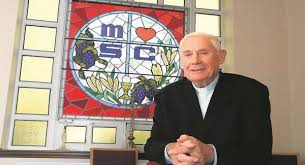
Fr Jerry Daly MSC, many years stationed at St Albans
The Missionaries of the Sacred Heart were founded by a diocesan priest, Fr Jules Chevalier, in Issoudun, France, in 1854. He was touched by the sufferings of the people and saw this human tragedy calling for compassion. He became a missionary of God’s love and dedicated his life to a single goal: ‘May the Sacred Heart of Jesus be everywhere loved.’ He envisioned three groups working together to fulfil his mission: Religious men and women, an association of diocesan priests, and a group of Laity who would take this mission to their homes and to their work places. Today the MSCs and the lay branch of his Spiritual Family are represented in all continents, where they continue Fr Jules’ work to make God’s love known wherever and whenever it is needed most, empowering, educating, and inspiring hope in poverty-stricken communities across the world.
In June 2019 the Missionaries of the Sacred Heart reluctantly decided that they would have to hand the parish back to the pastoral care of Westminster Archdiocese. Since the beginning of 2018 three members of the St Albans MSC community had died. While Frs Sandy Murray and Henry Twohig were retired members of the community, Fr Tom Hewitt was very much a key member of the Parish Team. The Parish Priest, Fr Tom Plower, had a health problem and was urged by his doctors to retire from full-time ministry; Fr Alan’s appointment as Vocations Director would soon come to an end and he would be moving on to another appointment in the Province; and Fr Jimmy was also due to retire. As a missionary congregation, the Missionaries of the Sacred Heart are committed to continuing their presence and ministry in North America, Venezuela and South Africa, but even there the last remaining Irish and English missionaries were about to retire. Sadly, the reality was that the MSCs simply did not have enough priests to provide continued ministry here in St Albans. So it was that in September 2019 the Parish came under the pastoral care of the diocese and we welcomed Fr Michael O’Boy, formerly Vice Rector and Dean of Studies at Allen Hall Seminary as our new Parish Priest and Fr Julian Davies, newly ordained, as Assistant Priest.
The influence and ethos of the MSCs for the past 120 years continues to permeate throughout our parish. Fr Chevalier’s vison of clergy, religious and laity working together is evident in the many activities that fulfil the command to love one’s neighbour. As well as the strategy groups there are many other voluntary organisations in our parish who care for the disadvantaged, and others who prefer devotional activities.
Our St Albans Group of the Lay Chevalier Family remains allied to the MSC Irish Province and is committed to keeping parishioners informed about the importance and continuing relevance of the Spirituality of the Heart in the world today. A Newsletter entitled “Heart to Heart” is freely available and there is an online presence at www.hearttoheartstalbans.org. The group meets on a regular basis for prayer and reflection. They also enjoy close links with members of the European Lay members of the Chevalier family many of whom now live in parishes formerly served by the MSCs and are an inspiration to our parish in the way they have kept the legacy of Fr Jules alive for many years.
A more detailed history of the parish from the first beginnings in 1840 and of the Missionaries of the Sacred Heart in St Albans since 1899 has been written by one of our late parishioners, James Corbett.

James Corbett “Celebration; The story of a parish. SS Alban and Stephen 1840-1990” 1990
ISBN 0 9517037 0 6
CONGRATULATIONS, ST JOHN’S COLLEGE, DARWIN, 60 YEARS
CONGRATULATIONS, ST JOHN’S COLLEGE, DARWIN, 60 YEARS

An MSC congratulations to St John's because for 30 years there was a strong MSC presence, Principals, staff of Brothers and Priests. The College belongs to the Diocese of Darwin, but from 1960 for about 30 years, it was staffed by MSC. After the destruction of Cyclone Tracy on Christmas Day 1974, there was a collaboration with the OLSH Sisters on the staff. Since the 1990s, there has been a lay staff. There is a Chevalier campus of the college.
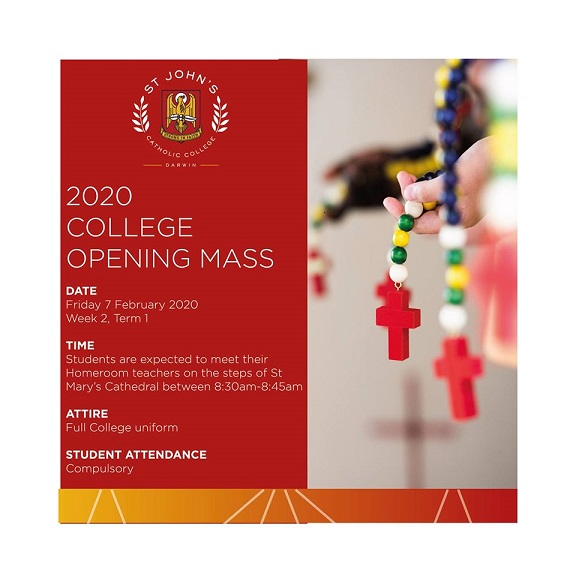
Our 2020 College Opening Mass which will be held at St Mary's Star of the Sea Cathedral, Smith Street Darwin. Our Principal celebrant will be the Most Reverend Charles Gauci Bishop of Darwin.
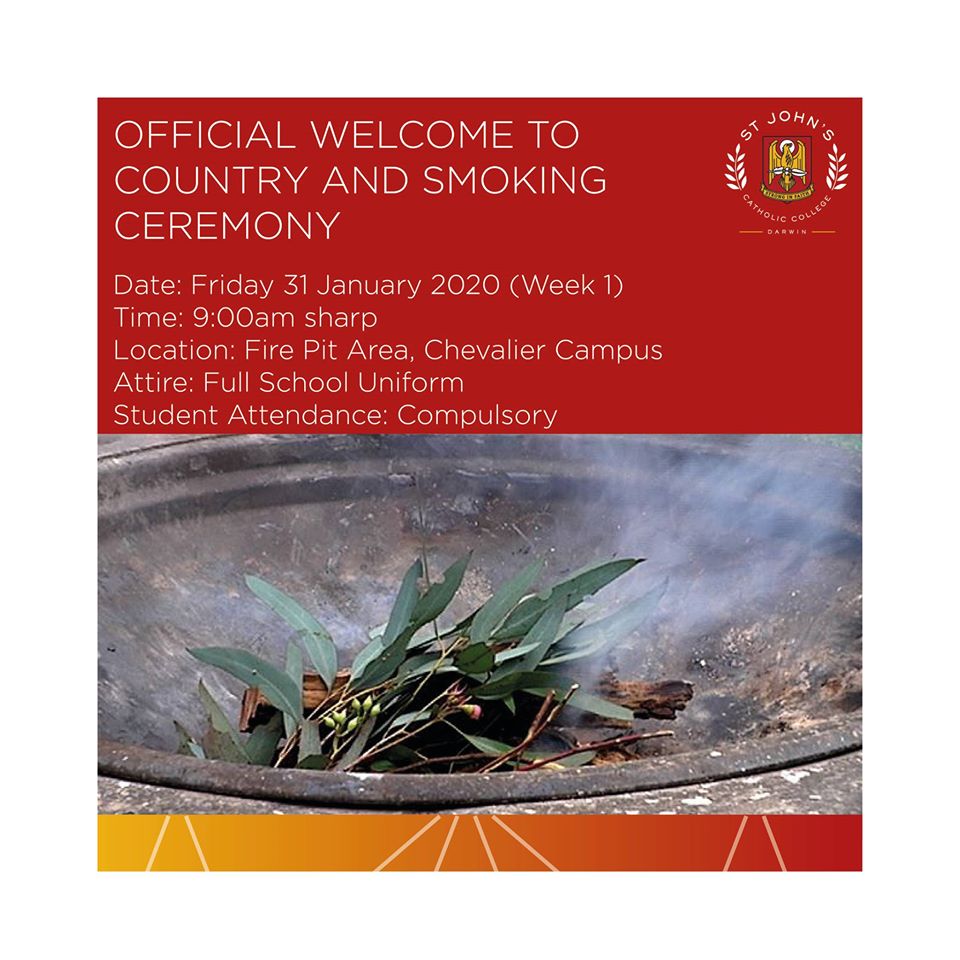
The theme for 2020 will be 'Strong in Faith' as we will be celebrating 60 years since the College was founded in 1960.
A FILM ON A WORLD WAR II SAINT YOU MIGHT LIKE TO SEE: FRANZ JAGERSTATTER, BEATIFIED BY BENEDICT XVI IN 2007
A FILM ON A WORLD WAR II SAINT YOU MIGHT LIKE TO SEE: FRANZ JAGERSTATTER, BEATIFIED BY BENEDICT XVI IN 2007
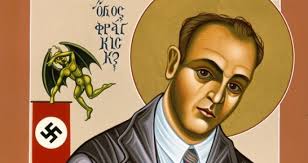
A HIDDEN LIFE
US/Germany, 2019, 174 minutes. August Diehl, Valerie Pachner. Directed by Terrence Malick.
The title comes from a quotation, George Elliot in Middlemarch. It highlights the power of small and hidden lives, their power for good and its effect. The quotation rightly applies to the Austrian conscientious objector to his country’s involvement in World War II, to the oath of loyalty that each soldier was required to make to Adolf Hitler himself.
“..for the growing good of the world is partly dependent on unhistoric acts; and that things are not so ill with you and me as they might have been, is half owing to the number who lived faithfully a hidden life, and rest in unvisited tombs.”
This is the story of Franz Jagerstatter, the Austrian farmer who was prepared to go to prison, prepared to die for his convictions, the conscientious objector against Hitler and the war. While the film shows his Austrian Catholicism, his life of faith and devotion, the advice he seeks from the parish priest as well as from the Bishop, the screenplay does not name his Catholicism so explicitly. And, at the end, there is no indication that, in fact, Franz Jagerstatter was beatified by Pope Benedict XVI in 2007, a strong witness to the injustices of the war. Jagerstatter is the Catholic stance while Dietrich Bonhoeffer, Lutheran pastor, is the Protestant witness to anti-Nazi defiance.
This film, running five minute short of three hours (which some reviewers and audiences have found rather long, languorously long) has been directed by the celebrated Terrence Malick and so has received more extensive release.

While A Hidden Life does tell its story in a continuous linear screenplay, Malick has never been a conventional storyteller. While he has a deep admiration for Jagerstatter and his stances and his faith motivations leading to ultimate self-sacrifice, Malick is something of a visual poet. With Italian mountain locations standing in for Austria and Jagerstatter’s village of St Radegund, so much of the film, with his using widescreen lenses, invites wonder and contemplation. Jagerstatter comes from a beautiful natural world, lives in harmony with it is a farmer, but is prepared to leave it because of principle and conviction.
He is portrayed by German actor, August Diehl, who makes a convincing character. He is matched by Valerie Pachner as Fani, his wife,. We see their courtship, their marriage, having a child, the hard work in those beautifully-shot fields, with the mountain backgrounds. We see their life with other people in the village. We see them at church.
Perhaps this should have been mentioned earlier, but the opening minutes of the film have substantial and disturbing footage from the 1930s, Hitler and his entourage, public rallies, his speeches, the adoring public, the spirit of Heil Hitler. Obviously, this creates an initial atmosphere for this story. So, Franz goes to a neighbouring town for military training, bayonet practice, encountering a friend who is a conscientious objector. When Franz returns home, he is troubled, sharing this with Fani, but their becoming victims of derision by their fellows, being vilified, finding it difficult to sell their produce (though some sympathy from the few older women). Fani’s sister, unmarried, comes to live on the farm and help with the work but strong moral support. Frantz’s mother, hostile to Fani, also lives there.

It is no surprise when Franz is called up, refuses the salute and the oath, is imprisoned, interrogated, mocked, treated badly. Fani tries to organise a visit to him but is baffled by bureaucratic manipulation. However, the screenplay relies on excerpts from their many letters, declarations of conviction, loving support, spoken in voice-over by the couple.
A lot of the second part of the film is spent in prisons, especially with the transfer of Franz to Berlin, the range of prisoners there, the maltreatment, interrogations, torture, squalid cells, time in the yards, the witnessing of executions. There is the pathos of their not being allowed to touch when Fani, accompanied by her father, is eventually allowed to see her husband in Berlin.
And, it is jolting for the prisoners to witness executions, a guillotine, and jolting for audiences to watch the men going to be killed. Martyrdom is demanding.
Terrence Malick, making this film in his 70s, drawing on his expertise in filming even drastic circumstances with beauty, exploring the nobility of the human spirit, has given this 21st-century world a witness to faith and heroism, for which we can be grateful.
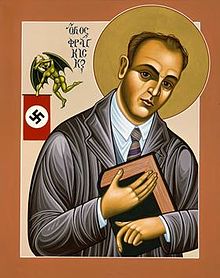
Winner of the Ecumenical Award, Cannes, 2019.
Peter Malone MSC
NEWS ABOUT SHOREHAM 2020
NEWS ABOUT SHOREHAM 2020
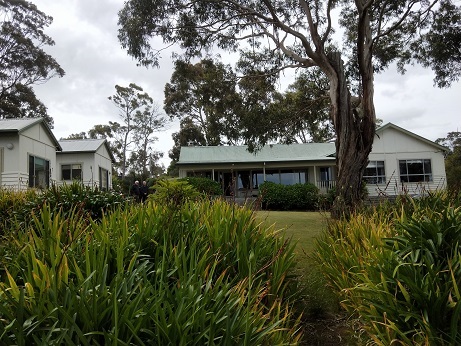
Brian Gallagher has moved from Shoreham to Blacburn. He has sent this message about what is happening at The Cliffs, Shoreham this year.
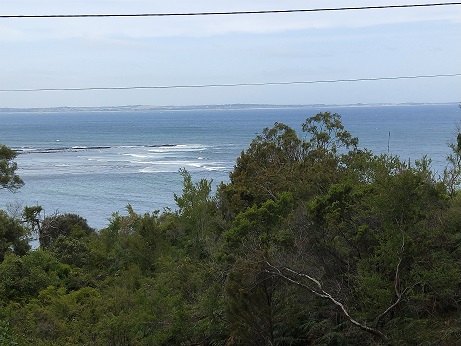
Clare and Artie Shearman are now installed and enthusiastic about continuing the retreat ministry. Clare is the spiritual director, graduate of Siloam Spiritual Direction at Heart of Life in 2014, her husband, Artie, is manager (which includes maintenance man and gardener).
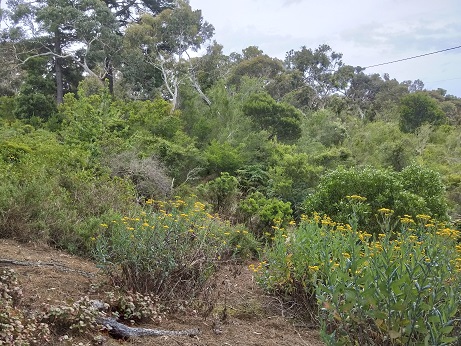
Clare is taking bookings already and has offered to give MSC preferential service. Currently, they are living in the main house and using the three cottages for retreatants.

The same phone number and postal address remain. There is a website: www.thecliffsretreat.com worth checking. Contact details are there.
PP TRANSITION AT MOONAH PARISH
PP TRANSITION AT MOONAH PARISH
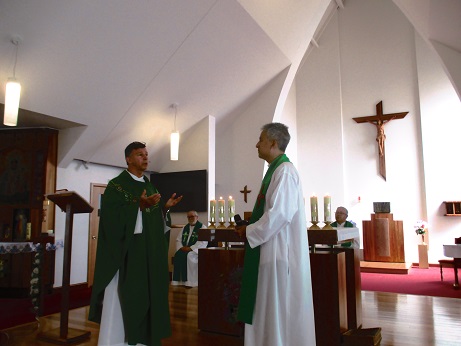
Krish Mathavan has been appointed the new parish priest of Moonah-Lutana in the suburbs of Hobart. He moves from Henley Beach, Adelaide.

A happy occasion
Mark Hanns is the outgoing parish priest and will take up a position in MSC Formation in Blackburn Melbourne.

Below some photos of the Church and presbytery for those who have not visited Moonah recently (taken by parishioners and Philip Malone, community Leader in Victoria and Tasmania) who represented Chris McPhee.
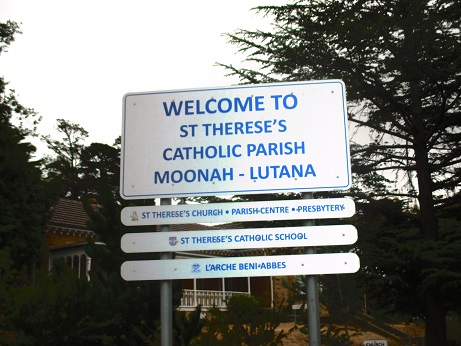
Church
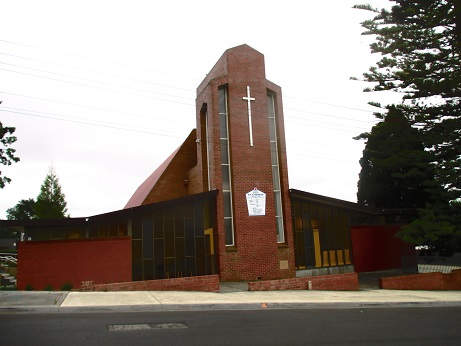
Interior
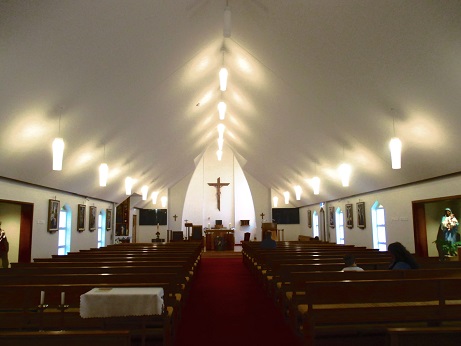
Presbytery
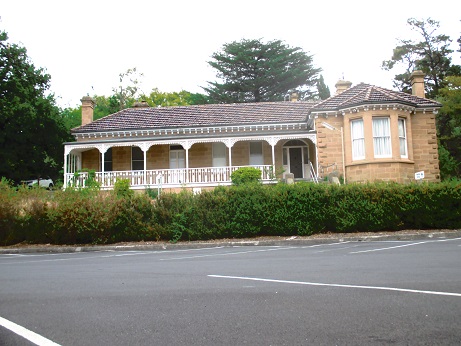
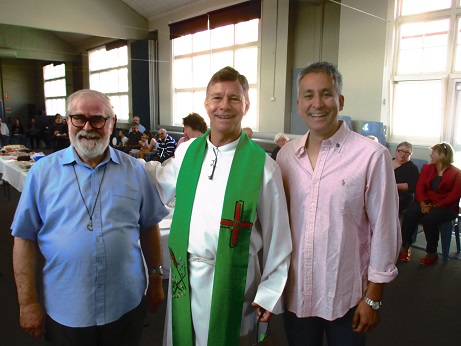
CHEVALIER FAMILY FIRST FRIDAY. AND MSC MISSION OFFICE BUSHFIRE APPEAL
CHEVALIER FAMILY FIRST FRIDAY. AND MSC MISSION OFFICE BUSHFIRE APPEAL
The poster for the Chevalier family Justice and Peace intention
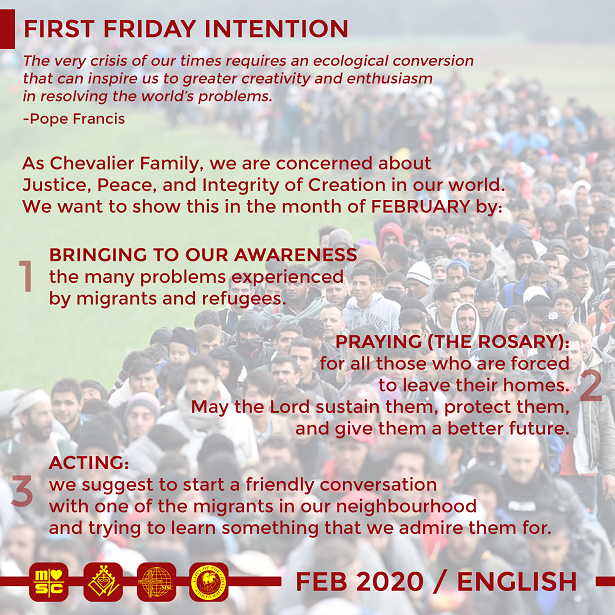
A MESSAGE FOR THE FIRST FRIDAY FROM THE DIRECTOR OF THE MSC MISSION OFFICE.
I am humbled to share that we have reached 60% of our goal for our bushfire recovery appeal. The $12,162 we have been given will support families and individuals affected by bushfires in the Southern Highlands.
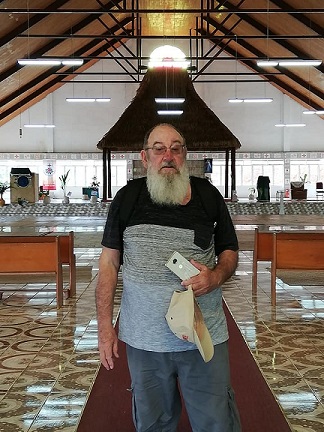
We are working with Chevalier College in Bowral to discern how these funds can best support the direct and indirect costs associated with recovery. I welcome you to get in touch with any questions about our processes for distributing donations, whether in relation to the bushfire recovery appeal or any other project for which the MSC Mission Office seeks support.
I am thankful for the generosity of the MSC Pacific Union. As an overseas mission agency, it is humbling to receive the support and prayers of our Pacific neighbours.
I will be sharing further updates on the MSC Mission Office Australia website as we continue to support communities in the Southern Highlands.
Fire near Sutton Forest, Southern Highlands
You can support our appeal by making a donation online or by getting in touch on 02 9697 0983.
Best,
Fr Roger Purcell
MSC Mission Office Australia
WELCOME VINCENT TO THE MSC PRE-NOVITIATE
WELCOME VINCENT TO THE MSC PRE-NOVITIATE
Vincent began his pre-Novitiate on January 24th. We asked him to write something about himself for us:

Vincent, Phong Phan
I was born on the 19th of March 1976; in Saigon, VietNam. I am the middle child with an older and a younger sister. My father was a school teacher before he entered the Dominican Religious Order but left them because of the war. After the war ended, he was imprisoned in the re-education camp for three and a half years because he was an officer with the South VietNam Army.
We escaped VietNam by boat in 1985, after six nights and seven days our boat reached Indonesia. We were placed in an UN refugee's camp for fourteen months at Galang before arriving in Hobart, Tasmania, in August 1986. Because of the cold weather, we transfered to Villawood Migrants' Centre in Sydney and lived in Parramatta from 1987 to 1995.
I was taught by the Marist Brothers at St Patrick’s Marist College, Dundas from 1988 to 1993. I studied engineering and architectural drafting at South Western Sydney Institute College, Granville from 1994 to 1996. I worked as a technician from 1995 to 2009 when the company closed because of the GFC. Then work in various jobs before joining the seminary in 2011. Because of my age I was not able to continue after the fourth year.
Continue to work as a courier and handyman before I was introduced to Fr Peter Huan of the Missionaries of the Sacred Heart thanks to Fr Francis Tran at Dapto. I spent the last six months of 2019 discerning about the MSC with the help of Fr Frank Dineen and Fr Peter Huan.
In 2020, I'm beginning a new journey to Blackburn in Melbourne for the pre-novices program. So this year will be an important time for me to journey into the Heart after years of wandering. As St Mary of the Cross McKillop said: "Above all... Listen to the whisperings of God to your own Heart."
NEW OLSH PROVINCIAL SUPERIOR, PHILIPPA MURPHY
NEW OLSH PROVINCIAL SUPERIOR, PHILIPPA MURPHY
On Monday afternoon as we gathered together as OLSH Family for the “Call to Leadership at the Service of Unity” Ceremony, I thought “Lord it is good for us to be here”.
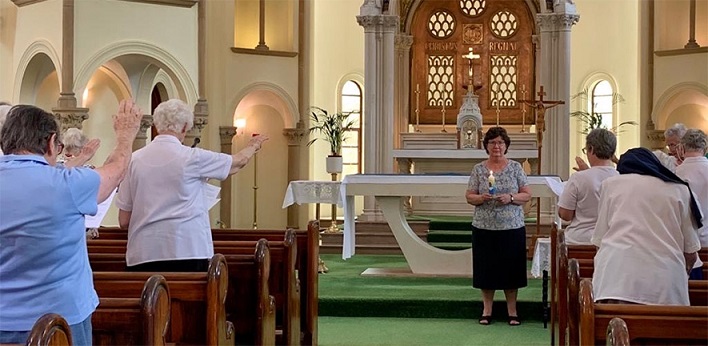
Standing side by side we began the Ceremony with our traditional hymn to Our Lady of the Sacred Heart. Choosing this hymn to Our Lady always evokes memories of the past. For we all realise the truth in the saying “there can be no future without a past”.
Words from our Constitutions followed. There were three readings all reminding us of the love of Jesus for each and every one.
The readings were followed by the meaningful action by Tess in anointing the hands of Philippa as she begins her term as Provincial. We all then welcomed Philippa as our new leader, assuring her of our love, support and prayer. As we extended our hands in blessing over Philippa we prayed; “May the Lord grant you the audacity of Deborah and the courage of Esther and Judith. May God fill you with joy as God did Anna, and with loyalty and faithful love, as God did Ruth. May you be able to sing and dance for joy near the sea as Miriam the prophetess, and with Mary of Nazareth, proclaim the greatness of the Lord, with the hungry and humble ones”.
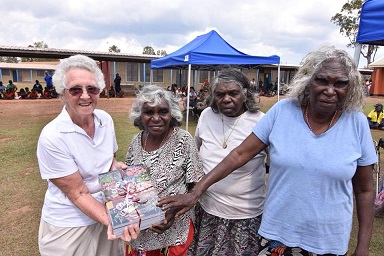
Tess has returned to Wadeye.
Philippa then thanked Tess for her three years of service to our Province. Candles, with the flames glowing strongly, were lit by Philippa and she handed one to each Provincial Councillor. We recited the Memorare and then, to end our Ceremony, the words of a “Fire on the Earth” rang out.
Sister Anne Gardiner OLSH
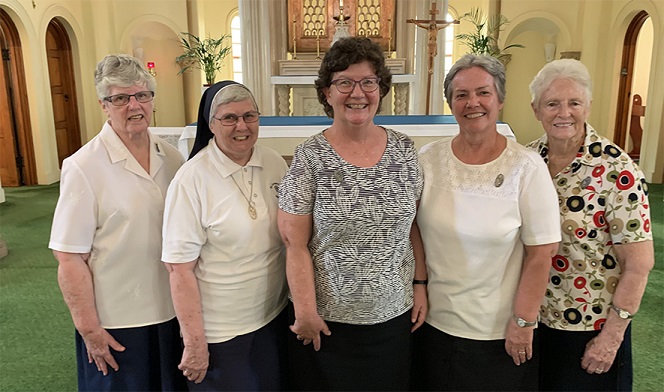
Provincial Council (left to right): Moya Hanlen, Pauline Richards, Philippa Murphy, Lorraine McCleary, Mary Stevens
WELCOME ANH TO THE MSC PRE-NOVITIATE.
WELCOME ANH TO THE MSC PRE-NOVITIATE.
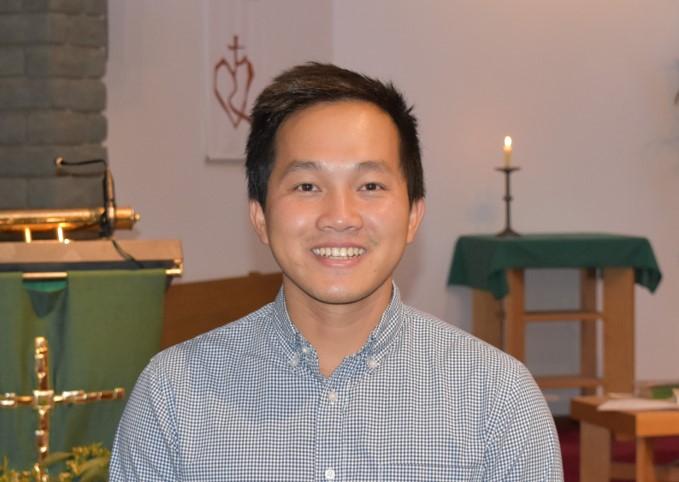
Anh began his pre-Novitiate on January 24th. We asked him to write something about himself for us:
My name is Anh and I turned 28-year-old this year. I was born and raised in Southern Vietnam but moved to Australia to study 3 years ago. I remember that one day in 2017 when I lived in Australia, I had anything for my life to meet my needs with happiness and I wonder what gives meaning to my life? What is at the core of my being?
So, I have looked for my spiritual director from my friend’s suggestion after a retreat with him. I found Fr. Thang MSC in my reconciliation and he became my spiritual director. Around one year, I have been discerning my vocation with the help of Fr. Thang and I have received some signs God is calling me by my name.
During the Christmas party at Kew in 2018, I received a message from Fr Frank (Andersen) as a Christmas present: “Arise Morning Star, do not delay”. I believe that God has invited me to do something and do not delay my ‘desire’ in Latin word ‘sidus’ meaning a constellation or ‘a star’. This is like the image of a star leading the way for the three kings to come to God.
Secondly, I attended Pre-Novitiate Reception Liturgy last year. After I came back home, something in my heart like burns with a warm strong intensity (my desire) forced me to join the MSC. With my all courage, I have made contact with all formation priest MSC that I knew, and they have agreed for me to join the MSC.
Furthermore, I have lived three Pre-Novitiate students in Cuskelly House, I found myself suitable to religious life with community where I lived. That was a great experience in my life.
Finally, I would like to say thank you for the MSC to give me a wonderful opportunity to be there to be a trainee. Thank you very much !
SIGNIFICANT FEBRUARY DAYS FOR THE CHEVALIER FAMILY
SIGNIFICANT FEBRUARY DAYS FOR THE CHEVALIER FAMILY, 2020
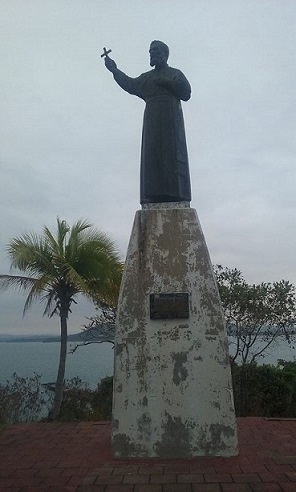
February is a month highlighting Bishop Henri Verjus MSC, often called Henry Verius, young pioneer missionary of PNG, first MSC Bishop of Yule Island, 1860-1892, died at age 32..
2 February, 1892
The title of Saint Joseph "Friend of the Sacred Heart" is changed to "Saint Joseph, patron and model of those of love the Sacred Heart".
5 February, 1900
Canonical Erection of the Congregation of MSC Sisters and approbation of the Statutes for five years.
6 February, 1855
Chevalier and Maugenest finish their second novena to the Blessed Virgin.
Their prayer is answered. They are promised 1000 francs, per year, from a generous benefactor, for their living expenses.
10 February, 1885
Fr. Verjus and three Italian Brothers leave Sydney for Thursday Island.
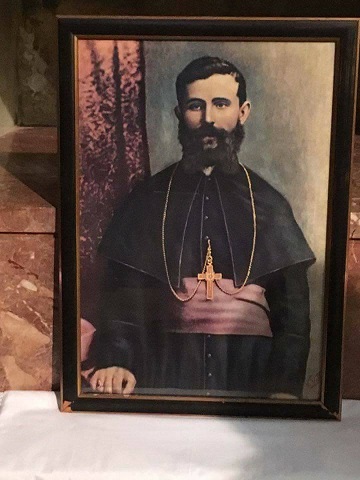
15 February, 1981
Fr. Juan Alonso Fernandez, MSC, of the Spanish Province, is violently assassinated in Guatemala.
16 February, 1915
Fr. Charles Piperon dies in Thuin, Belgium. He was longtime companion and confidant of Jules Chevalier.
February, 1908
Marie Louise Hartzer, first Superior General of the Daughters of Our Lady of the Sacred Heart, dies in Thuin, Belgium. She is buried four days later. Marie Louise had left France due to the expulsions of religious by the French Government.
23 February, 1945
29 Dutch MSC are freed form the concentration camp at Los Baños, Philippines.
24 February, 1985
Fr. Henri Verjus arrives at Thursday Island after having left Sydney earlier in the month.
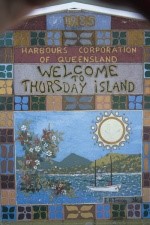
25 February, 1875
The Vatican orders that, in future, all new images of Our Lady of the Sacred Heart must represent the Child Jesus on the arms of his mother, and not standing before her.

